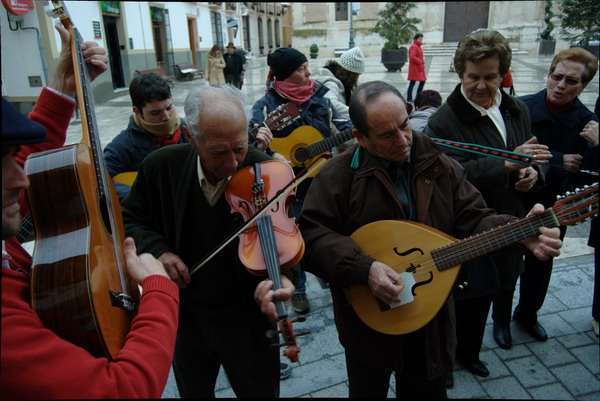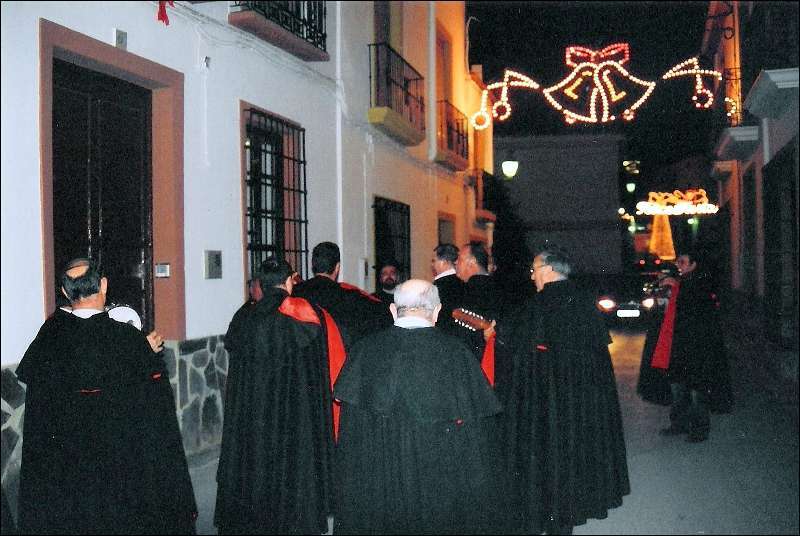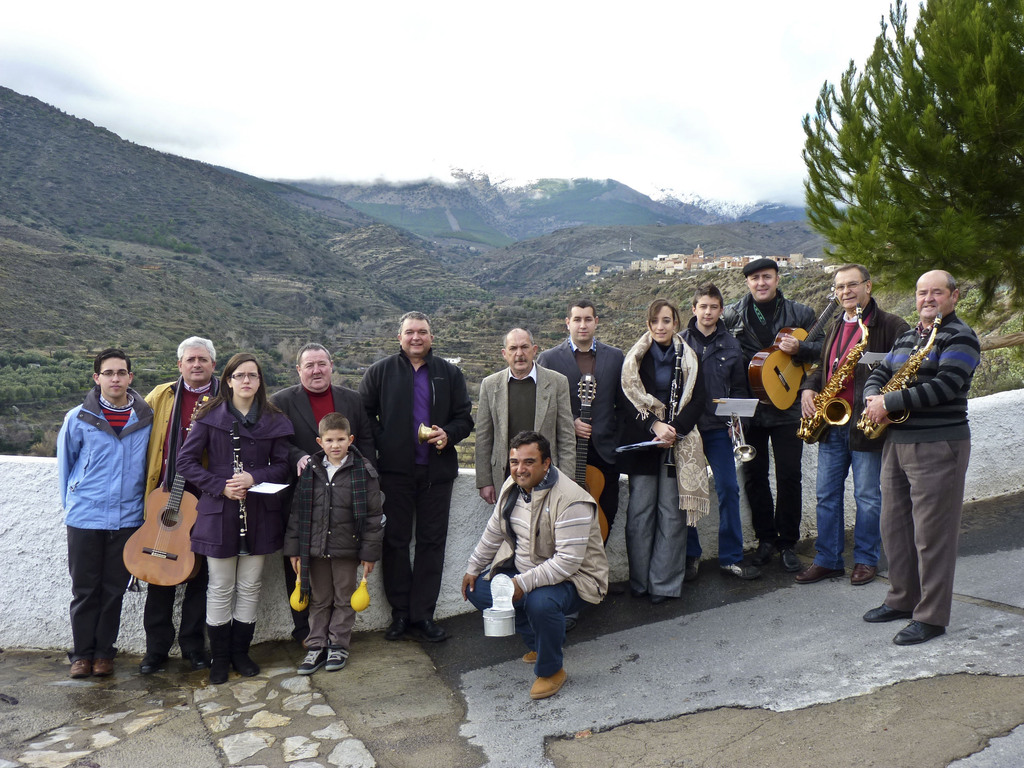Brotherhoods of Blessed Souls (Cuadrillas de ánimas)
Historical Notes
The origin of these Brotherhoods of Benditas Ánimas del Purgatorio (the Blessed Souls in Purgatory) lies in the cult of the dead and the concern for their faults and sorrows. Throughout the history of mankind, these ideas and rites have always been practised, being from the 16th century onwards when Christianity developed this special cult for the souls of the dead.
The cuadrillas de ánimas are widespread throughout the southeast of the Iberian Peninsula (north of Granada and Almería, Murcia and southeast Albacete), although in most towns the cuadrillas are only an imitation of what they used to be. In the region of Los Vélez only the cuadrilla of Vélez-Blanco maintains the original formation and continues with the traditional outings during Christmas.
Traditionally, cuadrillas would gather in the morning and then go through the streets of the villages and through the cottages to which they were called, playing; however, nowadays they only play where they are called or in places where they know a lot of people will attend.
When moving through the streets they maintain a singular formation. Firstly, a boy advances and warns the neighbours by ringing a bell, followed by the mayordomo (butler), who knocks directly on the doors and asks if they want music or a prayer, which is done in the case of a relative who has recently passed away, the question is usually: –Ánimas Benditas, ¿se canta o se reza? (Blessed souls, shall we sing or pray? If a song is requested, the whole group enters the house, the guión (guide) takes the centre of the group and the owner of the house can request the names of family members or relatives to be included in the couplet; the quality of the couplet improvised by the guión will determine the alms to be received, which in this case can be in the form of money or in kind, which will later be auctioned off to raise funds.) The alms will be carried by the mochilero (backpacker).
Also, on certain special days (Holy Innocents Day, New Year’s Day and Epiphany), there are Dances of the Innocents around the bars in the village. At these balls, in addition to dancing, the alms received in kind are auctioned off. It is also common for the musicians themselves to dance at these balls. At some points in these meetings, people respond to the guión, thus establishing a rivalry in which both repentistas (improvising singers) respond to each other.
In terms of organisation, there are a series of fixed and variable positions or characters. One central position is the mayordomo (butler), who is in charge of organising the cuadrilla, finding the musicians, setting the rehearsals and the itinerary. Another central character is the guión (in charge of musically guiding the cuadrilla), the trovador (because the lyrics are known as “trovos”) or repentista, who improvises the lyrics to be sung or who remembers a large number of songs. Next to the guión are the cuadrilleros, who are in charge of playing instruments (lute, guitar, tambourine, cymbals, etc.) to accompany the singing.
Period / Occurrence:
The festive cycle in which the cuadrillas de ánimas used to play corresponds to Christmas, usually marking the limits between the Immaculate Conception (8 December) and Candlemas (2 February), although these limits depended on the town or region, and could be shortened more or less, always having as limits important dates (Santa Lucía, San Antón, San Sebastián…).
Nowadays, however, their activities have become more restricted, and are usually limited to the days between Christmas (25th December) and Holy Innocents (28th December), New Year’s Eve (31st December) or Epiphany (5th/6th January).

Cuadrilla de Ánimas tocando por las calles. Vélez-Rubio (Almería). Photo: José Miguel Mejías del Río. © Instituto Andaluz del Patrimonio Histórico
IAPH image under the conditions established under license cc-by 3.0 de Creative Common. https://creativecommons.org/licenses/by/3.0/es/

Cuadrilla de Ánimas. Fondón (Almería). Photo: Ana Belén García Muñoz. © Instituto Andaluz del Patrimonio Histórico
IAPH image under the conditions established under license cc-by 3.0 de Creative Common. https://creativecommons.org/licenses/by/3.0/es/

Cuadrilla de las Ánimas. Abla (Almería). Photo: Elena Ramírez Guerra. © Instituto Andaluz del Patrimonio Histórico
IAPH image under the conditions established under license cc-by 3.0 de Creative Common. https://creativecommons.org/licenses/by/3.0/es/
ÁNGEL VILLEGAS FERRE. (2014). Cuadrillas de ánimas. Fondón. [Video File].
Instituto Andaluz del Patrimonio Histórico. IAPH. (2012). IAPH patrimonio inmaterial: Cuadrillas de ánimas. Vélez Rubio (Almería). [Video File].

